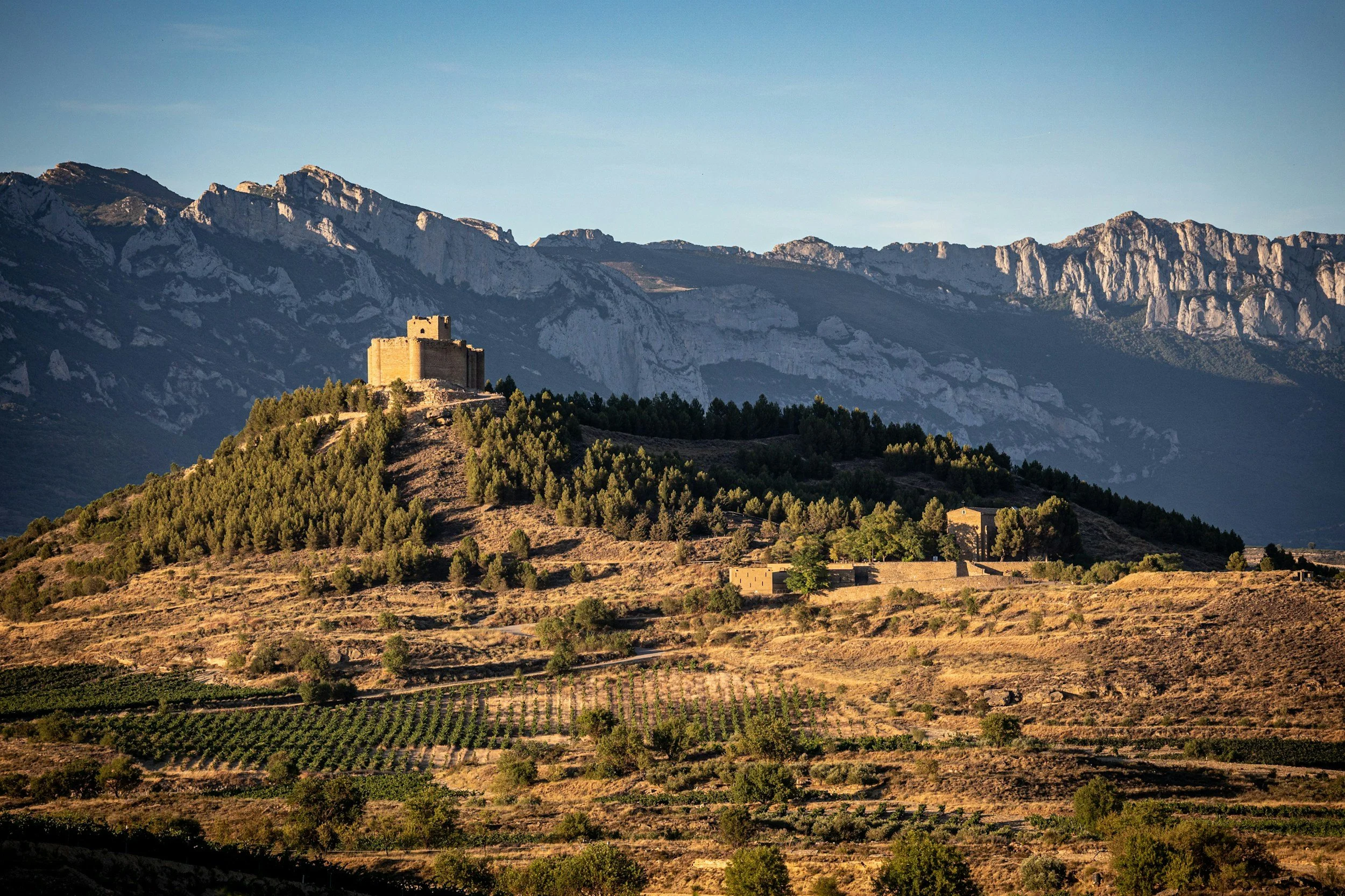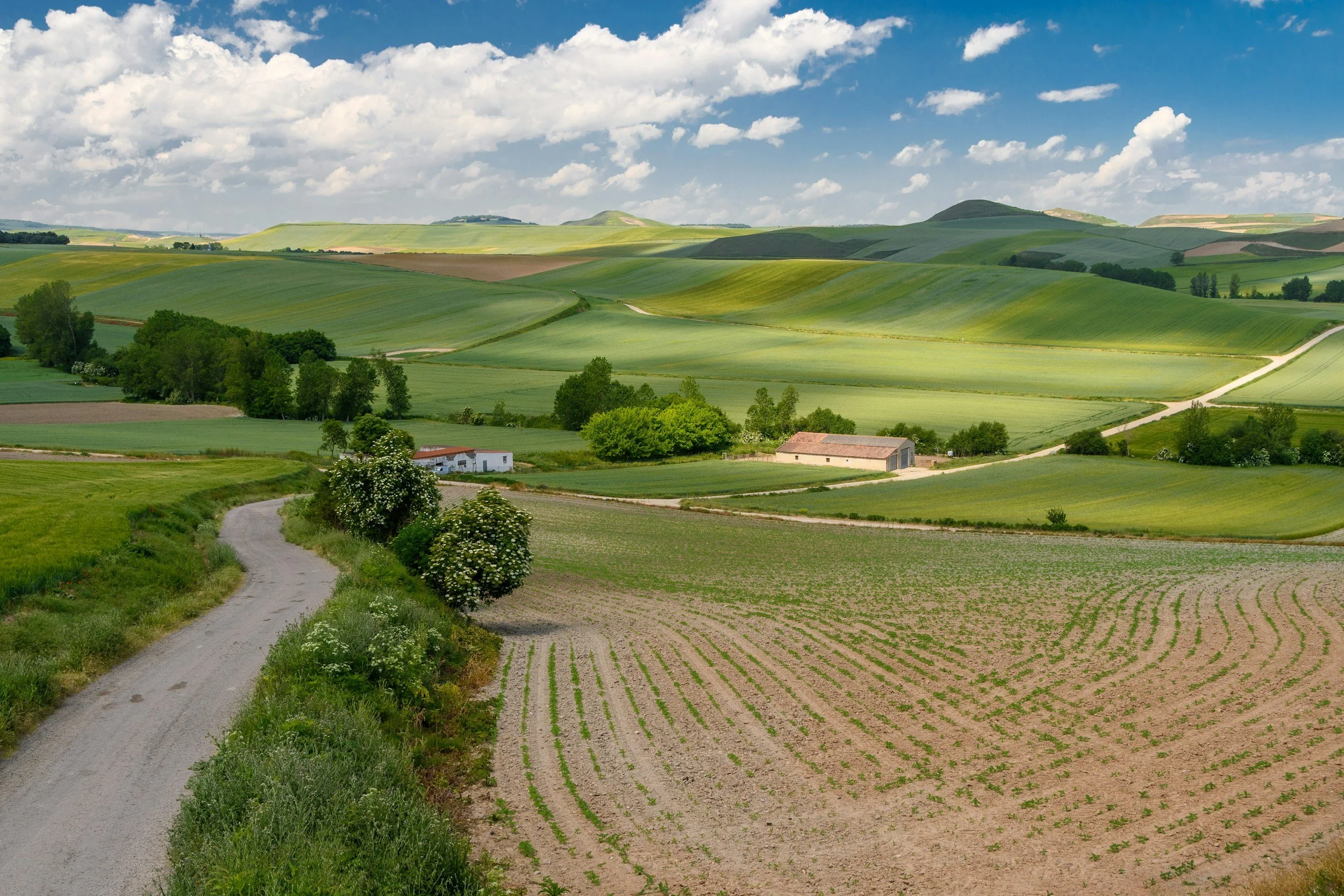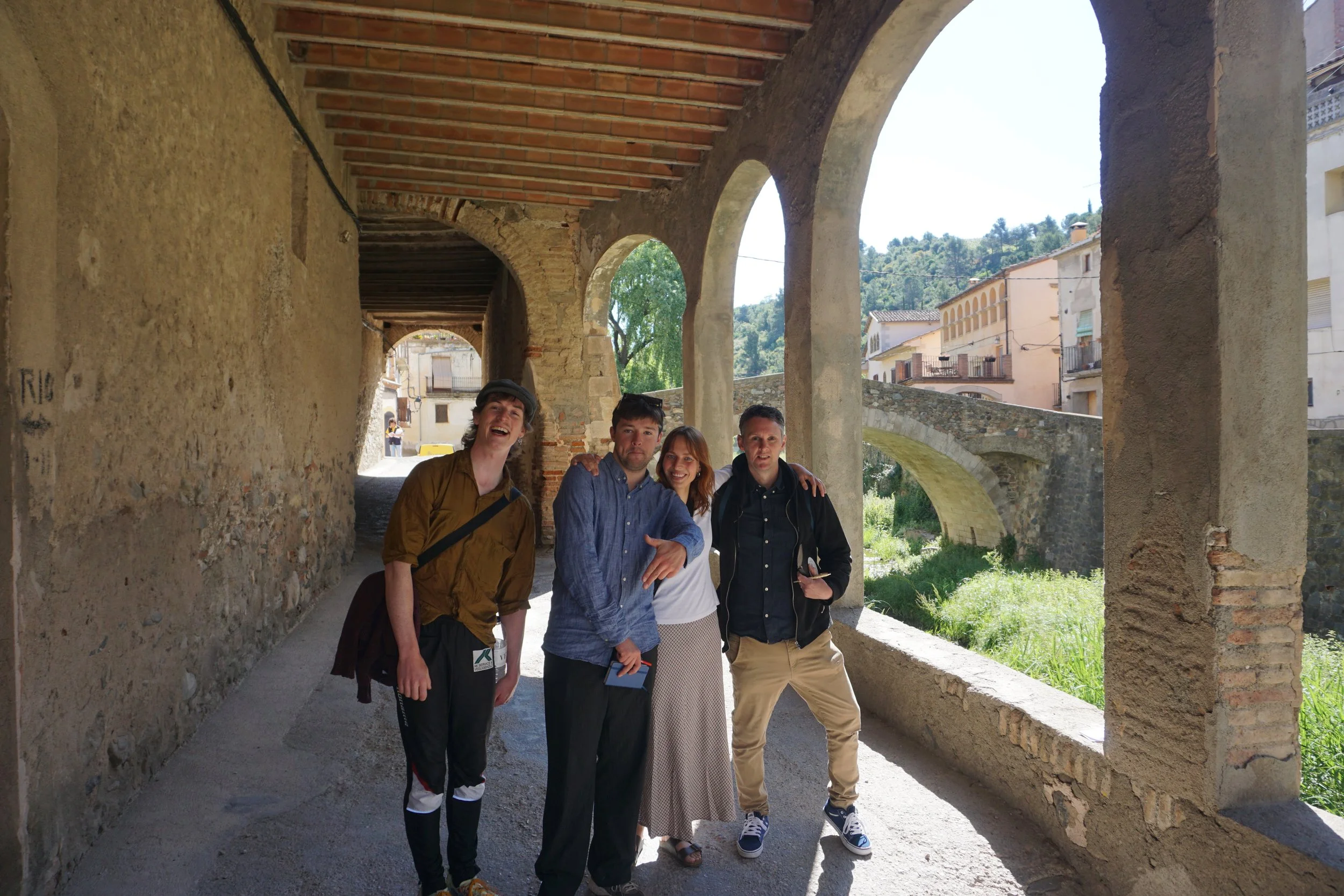Grapes of Altitude: Rioja, Aragon & Barcelona Reflections
La Rioja. Photo: Mario La Pergola
Editors note: This is part two of Kenny’s trip to Catalonia, the Basque Country, La Rioja and Aragon, 9 days with 16 visits in the northeastern part of the Iberian Peninsula. You can read part one here.
Day 5 San Sebastian – La Rioja
If the Basque Country was the wine region that I had the most doubts about in terms of quality before the trip, then Rioja is what I considered the most difficult to hit the mark in, as there are so many producers in the world-famous and very classic appellation, which covers 63,000 hectares and more than 800 producers distributed over the three areas Rioja Alta, Rioja Alavesa and Rioja Baja. And then, strangely enough, it is the only one of the country's two D.O.Ca's which also includes Priorat.
We start the morning by driving back through the beautiful Basque Country with its high, rocky mountains and into the flatter Castilla y León before we arrive at La Rioja with the many vineyards that circle the long, winding river Ebro, which with its 930 meters is the country's second longest after the Tajo.
If anyone is in any doubt, we have arrived in Tempranillo country, which is confirmed by today's two visits to Moraza and Bhilar, who however turn out to be less classic than expected. The former makes exclusively low-alcohol wines with high acidity and the latter has a more natural approach to the production, which results in fresher red wines than the area is known for.
We spend the evening in the charming and cozy wine town of Logroño, where I have found an Airbnb apartment right across from the Santa Maria Cathedral, before we the next day drive east through the Basque part of La Rioja, into the barren Navarre with its many small cliffs and further into Aragon, where we will spend the next two nights.
La Rioja. Photo: Bernard Wortelboer
Day 6 La Rioja – Campo de Borja, Aragon
Landscape-wise, the area of Aragon resembles Navarra with its large, bare and barren plains, small villages and concentrated vineyards, but when you hit the small wine appellations it is much more extreme, which we find out the next day. This day's wine visits are to natural wine producer Hontza in Rioja and Vinos del Viento in Campo de Borja, which is one of the three best-known appellations in Aragon. At the former we again encounter the more modern Rioja with light, fresh and immediate wines, after which at the latter we experience a completely different and more direct approach to wine production, where quantity seemed to mean more than quality. A slightly uncertain start to this new wine area for us, but we have three more visits the next day.
The evening is spent in the beautiful city of Zaragoza, through which the Ebro River flows and where the beautiful Plaza de Nuestra Señora del Pilar with the enormous basilica and many cozy streets gives a magnificent and inviting impression. A city I have always loved and which I enjoy even more as we head out for some food and more wine.
Day 7 Calatayud & Cariñena, Aragon
The next part of the tour is in Aragon with two visits to Calatayud and one to Cariñena, and after yesterday's somewhat disappointing visit to Campo de Borja we are a bit nervous about what awaits us. In terms of branding, Aragon in general and Calatayud in particular are focusing on what they call Extreme Wine, which is something to behold with its many concentrated vineyards located at an altitude of up to 1,050 meters. The area covers 3,200 hectares, which are distributed among a modest 16 producers, it received D.O. status in 1990 and, like in the rest of Aragon, the Garnacha grape is the dominant star.
At the first visit of the day to El Escocés Volante, we quickly get confirmation of the extreme conditions in the area, as Irish Rachel, who owns the vineyard with her husband Norell Robertson and their two sons, takes us up to the vineyards. After a quick look at our nice new rental car, she gives me the keys to her jeep and jumps into their Land Rover with three of my employees.
After a few minutes on the road with a view of the area's many red rocks, trees and olive groves, the trip goes up through an insanely hilly terrain consisting of narrow, red gravel paths in an enormous rocky landscape before, after 20 minutes of off-road driving, where the sand swirls into the air so that you can hardly see a hand in front of you, we arrive at their extreme vineyards at an altitude of 1,000 meters. And it is a fantastic sight. Harsh and lush at the same time. So dry, hot and almost unbearable that you can't help but wonder how on earth it is even possible to grow vine here. But that is what we find out an hour later, when we are back in the winery and, sheltered from the sun's rays and the 34°, taste their very well-composed wines. Wines that, with their dry, dusty and aromatic style, exemplarily reflect the terroir outside.
Unfortunately, our next visit to La Cerrada is a short one, as we have spent far too long time with Rachel and Norell, and we must quickly move on to the last visit of the day to the Cariñena appellation at Libre y Salvaje. Like Calatayud, we are in Garnachaland, but unlike its neighbouring appellation, Cariñena – which covers 14,250 hectares and 32 producers – already received its denomination in 1932, making it the country's 2nd oldest D.O. after La Mancha.
When we arrive at the agreed address, we are invited into a large courtyard of a very old mansion by oenologist Diego, who immediately shows us their impressive wine cellar, which extends more than a kilometre into the country below the property, before he takes us into the 18th-century villa, which is like something out of an Alexandre Dumas novel, where the owner, the young Jose Ignacio Marin, is waiting for us.
At this point, we are very excited about what we are going to taste, and from the first mouthful our expectations are fortunately confirmed. It tastes fantastic, the whites as well as the reds. Dry, powerful and dusty fruit-driven red wines on Garnacha and Cariñena just like we tasted at Volante, but with a mild and refined elegance that is rarely found in such robust wines. A fantastic end to our encounter with extreme Aragon, no less.
Day 8 Penedés, Catalonia – Barcelona
The trip is coming to an end, as the next day we set off for Barcelona, where we will spend the last two days. On the way, we stop by Jané Ventura in Penedés, with whom we have worked for many years, and where Gerard is ready with a huge lunch in the form of various dry and sweet local dishes from the baker, which we enjoy together with a good mix of his cavas, white wines, red wines and a single sweet wine.
Satisfied with food, wine and an incredible number of experiences, we drive the last 64 km to Barcelona, where the last, big experience of the trip awaits us the following evening in the form of a 15-course menu at Michelin restaurant Caelis. Before that, we enjoy the city in the mild evening climate and taste some wine before we head for bed in our apartment, which is located in the northern part of the city centre.
Kenny Brandt, DSF to the right. Photo: Noah Solkær Lassen
Day 9 Barcelona
After a much-needed brunch in front of La Sagrada Familia, everyone gets some time for themselves. Some go down to the beach at La Barceloneta, others go out and experience the city and I take a walk along the harbour and up La Rambla, where the gifts for the children and the lady are relatively quickly sorted.
In the afternoon, I sit down at a café in the middle of the busy life of the big city and try to get an overview of the many visits and tasting experiences of the trip. Of the 16 producers we have visited, three of which were existing partners, no fewer than eight are in play for our range in Vincaféen, two from each of the four areas – Catalonia, the Basque Country, Rioja & Aragon – that we have been to. We already have 328 different wines on the menu – all by the glass of course – and potentially there could be 25-30 new wines on the way. I remember that 7-8 years ago I told my then bar manager that when we reached 200 different wines, we would stop! But who can say no to good wine …
However, we cannot avoid the fact that with so many wines – in a wine bar with space for just 25 guests – we will sooner or later run into space problems on the shelves, in the wine coolers and in the cellars, not to mention the fact that for every new producer we find, we will end up ordering a little less from all the others we work with. Which is not sustainable in the long run.
This is just one of the topics of conversation we come across as we meet in the apartment late in the afternoon, put on the nicest clothes we have, and head towards Restaurant Caelis. However, we just reach a wine bar and a rooftop bar on the way, where we come to the mature and climate-friendly decision that the best thing would probably be to phase out all our overseas producers and concentrate exclusively on Europe, which will free up space for the new wines in Vincaféen and prevent the relationship with our other partners from suffering from our well-developed sense of new wine adventures.
The restaurant visit at Caelis is a great experience and an excellent end to the trip. The food is good and as always, each of us chooses a bottle of wine to go with the menu. And one of them is actually the formerly mentioned vintage 2021 from Joan d’Anguera, which still taste fantastic; you know, the one the D.O. system gave 3 out of 10 points!
When we leave the place at a quarter past one in the night, as the last guests, it is with a pleasant and experience-filled feeling in the whole body. A well-known author from Fyn once said at rejse er at leve, to which another Fynbo, this one, replies at smage vin er at opleve. Thank you for another wonderful wine tour. Adios!



